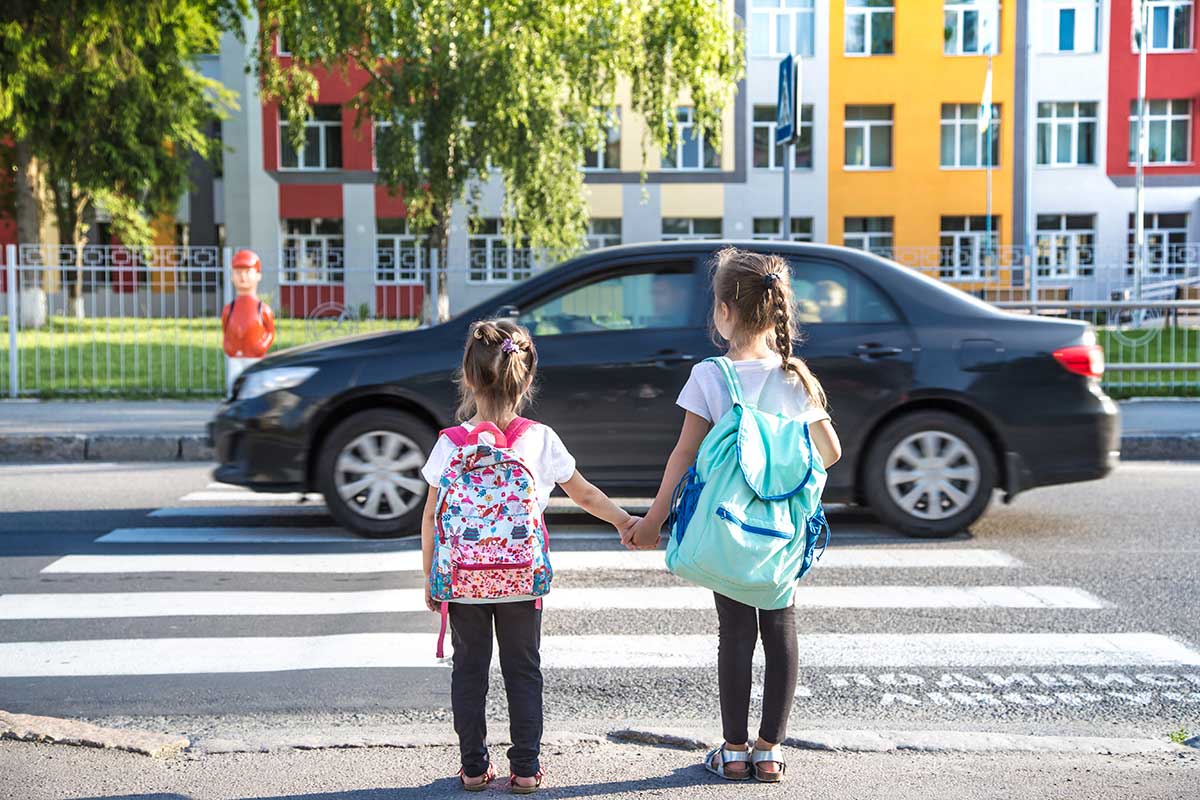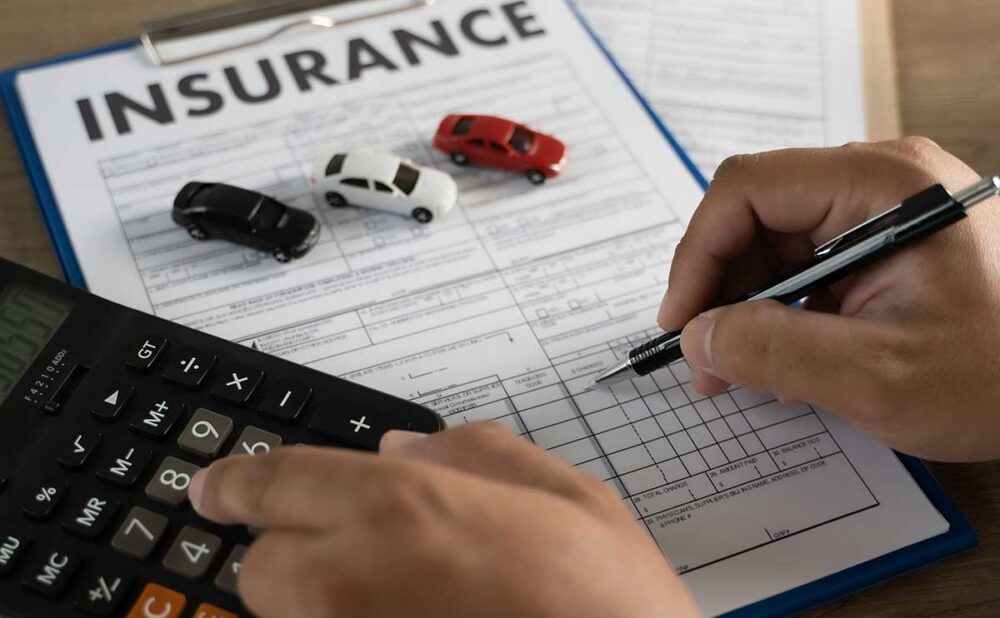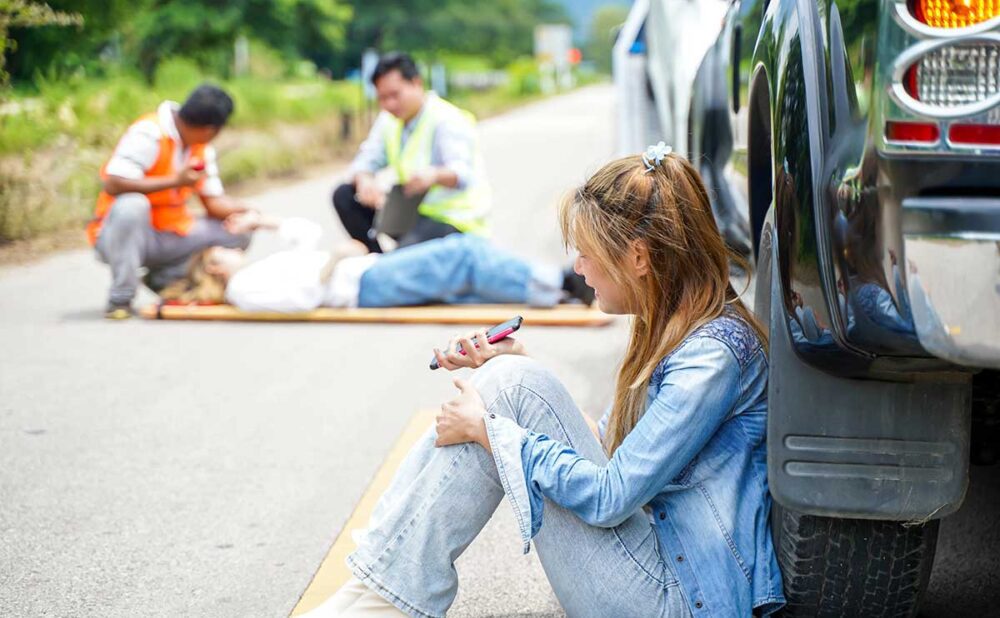Back to School Safety — The Most Important Back to School Supply
The start of the school year is approaching, bringing excitement for both parents and children. In the days leading up to the first day, preparations such as shopping for supplies, meeting teachers, and adjusting to new routines are underway. Preparing children for a safe and healthy school year goes beyond academic readiness. It involves equipping them with essential safety knowledge that can help mitigate risks and promote a secure learning environment. As families gear up for the back-to-school season, it’s crucial to be aware of the key back to school safety tips recommended by experts to safeguard children’s well-being.
The National Safety Council has created a Back to School Safety Checklist to assist caregivers in prioritizing the safety and well-being of children, whether they are on the road, in the classroom, or on the playground.
Parental involvement is key in fostering a culture of safety awareness among children. By engaging in open conversations about safety, parents can impart valuable knowledge and skills that enable children to navigate the transition from summer to school seamlessly. Establishing a dialogue on safety not only strengthens children’s preparedness but also cultivates a sense of responsibility and autonomy in managing potential risks.
Tips for Getting to School Safely
Children of all ages can follow precautions to ensure a safe journey to school. Take time to review the interactive guide below with your child, reinforcing the importance of staying safe during their commute this academic year.
Promoting Safe Travels to School
The National Center for Safe Routes to School offers valuable resources for parents and schools to promote safe travel to school. This year, some children may be walking or taking the bus to school independently for the first time, emphasizing the importance of ensuring their safety during this transition. As the school year progresses, parents must remain vigilant about their children’s safety on the roads, especially considering the potential distractions that drivers face, particularly in school zones.
To equip children who walk or bike to school with essential safety skills, parents can implement simple yet crucial measures. Collaborate with your children to map out their route, practice walking it together, identify safe crossing points, and encourage group travel whenever feasible. Educate children on the significance of using crosswalks, looking out for oncoming traffic, and maintaining alertness even when the pedestrian signal is in their favor.

Increased Congestion Around School Zones
Another area of focus is the transportation of children to school by car. The increased congestion around school zones necessitates a collective effort from drivers and pedestrians to minimize distractions and prioritize safety. Consider the following recommendations to guarantee your child’s safety during their commute to and from school:
- Head Up, Phone Down. Encourage children to stay vigilant when walking near vehicles by keeping their heads up and being mindful of their surroundings. Distractions like headphones and phones can obstruct pedestrians’ view of oncoming traffic, potentially leading to accidents. More information at Pedestrian Safety.
- Cross at Designated Points. Emphasize the importance of using designated crosswalks when crossing roads instead of jaywalking. Over 70 percent of pedestrian fatalities occur due to crossing outside intersections, underscoring the need for safe crossing practices. Get more information at Pedestrian Safety.
- Protective Gear for Biking. Ensure children wear properly fitted helmets while cycling to school as a crucial measure to prevent head injuries and fatalities. Guidance on fitting helmets correctly can be found through resources like the Helmet Fit Test provided by Safe Kids Worldwide. Learn more at Bike Safety.
- Use Hand Signals. Educate children about road etiquette and the significance of using appropriate Hand Signals while cycling for enhanced safety. Adhering to biking regulations is essential for preventing accidents, with resources such as Safe Kids offering guidance on learning these signals. Find more information at Bike Safety.
- Bus Safety. If your child commutes via bus, educate them on fundamental School Bus Safety protocols to mitigate risks of injury. Teach children to wait until the bus comes to a complete halt before boarding and maintain a safe distance from the bus at all times. Find more info at School Bus Safety.
Growing Concern Over Teen Vehicle Injuries
While there has been a decrease in fatalities among young children walking to school over the past two decades, statistics from SafeKids.org reveal that approximately 60 children are injured by vehicles daily in the United States, with a higher incidence before and after school, particularly in the fall. Despite advancements, tragic accidents and injuries still occur, underscoring the need for heightened awareness and preventative measures.
A growing concern is the rise in teenage injuries, attributed to distractions such as texting while walking. Parents of teenagers must emphasize the importance of keeping electronic devices stowed away while navigating roads and intersections to safeguard their well-being.
Back to School Impact on Traffic in South Atlanta
The excitement of another back-to-school season also comes a noticeable shift in traffic patterns that can impact your daily commute. As schools reopen, South Atlanta roads see a surge in vehicles as parents drop off their kids, school buses resume their routes, and young drivers head to classes. The Georgia Department of Transportation estimates that this influx contributes to a 6% increase in traffic on the city’s already congested streets. This uptick leads to longer travel times, heightened congestion, and a greater likelihood of traffic incidents, particularly during peak morning and afternoon hours when school-related activities are in full swing. By understanding these changes and planning ahead, you can navigate the back-to-school rush with ease and keep stress levels at bay.
Planning Your Commute
To streamline your school season commute and minimize headaches, consider implementing these proactive strategies:
- Early Departure. Start your day on the right foot by leaving home earlier than usual. Allotting an extra 15-20 minutes can significantly improve your chances of arriving at your destination on time.
- Carpooling. Reduce traffic volume and emissions by organizing a carpool with other parents or encouraging your teen to share a ride with friends.
- Public Transit. Opt for public transportation options like MARTA to sidestep the traffic snarls during rush hours. These services offer diverse routes across the city, providing a convenient alternative to driving.
- Navigation Apps. Stay informed about real-time traffic conditions using apps like Waze or Google Maps. These tools can suggest the quickest routes and help you steer clear of congestion.
- School Zone Avoidance. If your schedule allows flexibility, try to steer clear of school zones during peak drop-off and pick-up times. These areas tend to experience the heaviest traffic flow during these periods.

Prioritize Safety
Amidst the back-to-school chaos, safety should remain a top priority. Here are some essential safety tips to keep in mind:
- Adhere to School Zone Speed Limits. Respect the reduced speed limits in school zones and remain vigilant for children crossing the streets.
- School Bus Awareness. Always stop for school buses loading or unloading students, not just because it’s the law but also for the safety of the children. Exercise patience and maintain a safe distance.
- Teen Driver Education. If your teen is driving to school, ensure they grasp the importance of safe driving practices. Emphasize following traffic regulations, avoiding distractions, and showing consideration for other road users.
While navigating back-to-school traffic in Atlanta may present challenges, preparedness and patience can help you conquer the daily commute with ease. Remember, a little foresight and courtesy can go a long way in ensuring a smooth and stress-free journey during this bustling season.
Back to School Safety Tips Every Parent Should Know
While familiar safety considerations like road safety and pedestrian awareness remain relevant, the school setting introduces additional elements that require attention. In times of emergency, children must understand their responsibilities and be equipped to respond effectively, especially when adults are managing large groups of students in potentially stressful situations. By empowering children with safety knowledge before they return to school, parents can enhance their readiness to navigate emergencies and ensure their well-being.
To facilitate a smooth and secure transition back to school, experts recommend addressing the following safety areas with children:
Walking To and From School
Evaluate your child's readiness to walk to school based on their developmental stage and capabilities. Consider factors such as age and maturity before allowing children to walk independently, with experts suggesting a minimum age of around 10 years old for this responsibility.
As a parent, the decision to allow your child to walk or take the bus to school independently is a significant milestone. Ensuring their safety and preparedness for this responsibility is crucial. Here are some essential tips to help you prepare your child for a safe and smooth journey to school:
- Practice the Route. Take the time to walk the route to and from school with your child. Practice using designated crosswalks, obeying traffic signals, and always looking both ways before crossing the street.
- Reflective Gear. Encourage your child to wear reflective gear, especially during darker mornings or evenings, to enhance visibility to drivers.
- Walking Buddy System. Establish a walking buddy system with friends or neighbors. Having a companion can provide an added sense of security and companionship during the journey.
- Phone Safety. If your child carries a phone, enable location settings for your own peace of mind. However, ensure that location settings are turned off on social media apps to prevent strangers from tracking their route.
- Stranger Danger Tips. Review safety tips with your child, such as not talking to strangers, refusing rides from anyone, and contacting you or emergency services if they feel unsafe or followed.

Taking the Bus to School
- Bus Safety. Emphasize the importance of waiting in a safe area away from traffic while waiting for the bus. Teach your child never to cross in front of a bus unless it is safe to do so and all vehicles have stopped.
- Bus Etiquette. Instruct your child to remain seated and buckled while on the bus. Encourage them to follow the instructions of the bus driver for a safe and pleasant ride.
- Proper Bus Stop. Ensure that your child only gets off the bus at their designated stop. If they encounter a stranger at their stop without any familiar adults around, advise them to inform the bus driver immediately.
First-Aid Preparedness
- Basic First Aid Skills. Teach your child essential first aid practices, such as cleaning minor cuts and scrapes and carrying a few Band-aids in their backpack. Educate them on recognizing common illnesses and knowing when to seek adult help.
- Helping Others. Instruct your child on how to assist a friend in need of first aid. Encourage them to call for help and stay with the injured person until assistance arrives.
- Choking Awareness. Educate your child on signaling a choking incident using sign language and seeking help promptly. Reinforce the importance of eating slowly and avoiding placing objects in their mouths.
By equipping your child with the necessary knowledge and skills, you can instill confidence and ensure their safety during their journey to and from school. Remember, preparation and communication are key to fostering independence and responsibility in your child's daily routine.
Establishing Body Boundaries
Teaching your children about personal boundaries is vital in safeguarding their well-being. Encourage them to understand that their bodies are their own, and no one should touch them without their consent. If someone violates their boundaries, empower your child to move away from the individual and confide in a trusted adult about the incident. Open communication about body autonomy can instill a sense of empowerment and protect children from potential harm.
Navigating Social Media
In today's digital age, children are increasingly exposed to social media platforms at a young age. Discussing responsible social media usage with your child is essential to mitigate risks associated with online interactions. While opinions may vary on the appropriate age for a child to have a phone, if you decide to provide one, consider utilizing parental monitoring tools like Bark Technology Phone to supervise their online activities and ensure a safer digital experience.
Emphasize the importance of privacy settings, avoiding sharing personal information with strangers, and being mindful of their digital footprint. Educating children about the long-term implications of their online presence can help them make informed decisions and navigate social media responsibly. Prioritizing your child's safety through proactive measures and open dialogue is key to a successful back-to-school transition.
Emergency Preparedness
One crucial aspect of back-to-school safety is having a solid emergency plan in place. Before the school year begins, it is advisable to familiarize yourself with the school's safety protocols and emergency responses. Schools typically have procedures for situations like lockdowns, evacuations, and shelter-in-place, which are regularly practiced by both staff and students. In the event of an emergency, it is recommended not to rush to your child's school to avoid obstructing emergency services from reaching the premises swiftly.
Rememer, it is essential to educate your child on the significance of following emergency announcements calmly. Understanding that emergency protocols are precautionary measures and do not necessarily indicate a grave situation can help alleviate unnecessary panic and stress during such events.

Ensuring Child Safety: Tips for Parents
It’s crucial for parents to equip their children with the necessary tools and knowledge to navigate potentially unsafe or uncomfortable situations. Here are some proactive steps parents can take to promote their child’s safety and well-being:
Establish a "Safe Word"
Kids may find themselves in situations where they feel uneasy, even among friends. Consider implementing a "safe word" system, where your child can discreetly signal the need for help without drawing attention. If your child uses the safe word, ensure you respond promptly and without interrogation, allowing for a discussion once you are in a safe space.
See Something, Say Something
Differentiating between informing and tattling is essential. Encourage your child to speak up if they witness behavior that poses a risk to themselves or others. Whether it's concerning safety, bullying, or emotional distress, emphasize the importance of alerting a trusted adult immediately.
Address School Anxiety
The start of a new school year can trigger anxiety in many children. To alleviate these worries, consider the following tips:
- Visit the school beforehand to familiarize your child with the environment.
- Establish a consistent routine to provide stability and predictability.
- Teach relaxation techniques like deep breathing exercises to help manage stress.
- Foster open conversations about any anxieties your child may be experiencing.
Remember, as a parent, your demeanor plays a significant role in how your child manages their emotions. Stay composed and reassuring, especially during moments of heightened anxiety, as children often mirror their guardians' reactions. By prioritizing safety education and open communication, parents can help their children navigate challenges with confidence and resilience.
Stay Safe!
In conclusion, parents are urged to engage in conversations, walks, or bike rides with their children to instill fundamental pedestrian and bicycle safety practices for their school commute. For any inquiries regarding accidents or injuries, do not hesitate to reach out to The Jewkes Law Firm at (770) 771-5130. Wishing all children and families a successful and secure school year ahead. Stay vigilant, stay safe!










